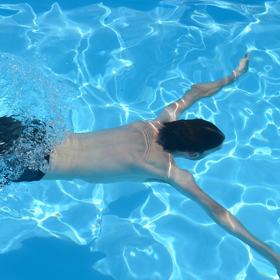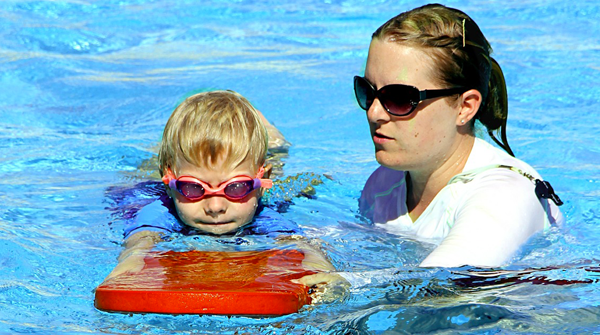If you have been looking for a work out this school holiday that is both amusing and that will make your children happy, you need not go far; the deal is in the neighborhood pool. The moment your children can at least properly do the doggy paddle at knee- deep areas of the pool, it becomes easy and possible to help them with the four broad strokes we have in swimming. They are:
1. Freestyle
2. Breaststroke
3. Backstroke and lastly
4. Butterfly
Freestyle: People usually use the term “front crawl” and “freestyle” interchangeably. Technically, freestyle directly puts freedom for swimmers to pick any swimming stroke of their choice, despite this freedom; most swimmers avoid choosing front crawl. Regarding this stroke, as a swimmer, you will have your arms far stretched in front of you. (exactly same as windmill- smile) and ensure you kick your legs back and forth straight behind you while swinging back and forth as you breath to the side.
The biggest problems swimmers often encounter with freestyle is how to manage their breath. It’s normal that when you start learning freestyle, to breath becomes a huge challenge. To tackle this for a beginner you need to get yourself a snorkel breather, at least it will take that difficult challenge out of your task when you’re moving forward in the water. Use that until you no longer feel breathing in and out is difficult. Ensure your body is properly balanced so as not to disrupt the line of the stroke.

Breaststroke: This is a stroke that is often known by its frog-like kicking style and rapid breath intermittently between strokes. As a swimmer, one needs to learn how to conquer the likelihood to divert from swimming straightforward in line. Your ability to create a line that you are relaxed with will make it possible for you to do virtually anything in swimming, but failing to do this will slow you down, and it often leads to disqualification in the swimming competitions.
Here is a useful hint; keeping to good kick will keep you glued to that perfectly straight line. So when you’re breast-stroking maintain a line with the perfect kick, and if you do this well enough, you worry less with your pull. Although the pull may be weak, they will help you in keeping your line with their kick.
Backstroke and lastly: It goes without saying that freestyle and backstroke are a bit similar given the style of pulling with arms and propelling the body forward with legs- but the only difference is backstroke uses more of the back. While many do think this makes backstroke simple and easy as a result of the simple breathing method, but don’t be cajoled with that.
Baby swimmers always find it not only strange but difficult to remain in this position while in water. However when as a swimmer you are not relaxed, the stroke is not going be perfect. To learn backstroke quickly and efficiently you don’t need to concentrate on the pulling of the arms but on your back being able to stay afloat on water. Young children are not convenient with on their back but the moment they can create the comfort and they can have a kick, young children can pull a slight broader than folks expect.
Butterfly: If you have ever watched that popular American swimmer and the most decorated Olympian of all time, Michael Phelps go in the water to swim with butterfly stroke you will realize how this kind of stroke requires great stamina and strength. However, before children can develop their muscles, it will require a lot of practice, although, maintaining the beat of the stroke is the secret. Why I say beat is because the butterfly is rhythmic in nature as a young swimmer, your swim coach will tell you that it’s two kicks for a stroke, and that’s to ensure you maintain the rhythmic pattern of the stroke while swimming. Even when the stroke is not yet flawless, young swimmers can consider practicing to learn the rhythm.
In short, butterfly needs being able to keep a pace an individual can initially feel relaxed with. It may be awkward at first instance, but that’s normal. With a good swim coach, constant practice, love for the sport and determination, it won’t take much time before you naturally start getting it. And remember always to listen to instructions your swim coach gives at all time.





